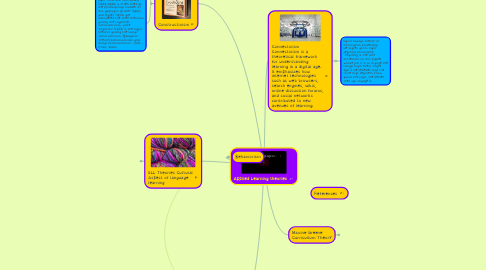
1. SSL Interaction on Second Language Learning
1.1. The Revised Interaction Hypothesis and Appeal to Cognitive Theory (Long 1996)
1.2. Negotiation of Meaning and the Learning of Target L2 structures and Vocabulary
1.3. The Role of Feedback during Oral interaction
1.4. The Problem of noticing
1.5. L2 Development in Computer-mediated Interaction
1.6. Characteristics of Learners and Of Tasks
2. Constructivism
2.1. Learn through experiences, self-directed learning.Constructivism is based on the idea that people actively construct or make their own knowledge, and that reality is determined by your experiences as a learner.
2.2. Main Theorists. John Dewey (1933/1998) is often cited as the philosophical founder of this approach. Bruner (1990) and Piaget (1972) are considered the chief theorists among the cognitive constructivists, while Vygotsky (1978) is the major theorist among the social constructivists. (Education Theory/Constructivism and Social Constructivism - UCD - CTAG, 2020)
3. SLL Theories Cultural Aspect of language learning
3.1. SSL Language Learning Research and Acquisition
3.1.1. 1970's
3.1.1.1. Daniel Slobin 1970 1985
3.1.1.1.1. Acquisition of language in young children
3.1.1.2. Selinker, L. 1972
3.1.1.2.1. Develops the Interlanguage idea that L2 learners develops interlocking systems of learning.
3.1.1.3. Gardner, R. C. 1972 & Lambert, W. C.
3.1.1.3.1. Influential proposal of MOTIVATION.
3.1.1.4. Roger Brown 1973
3.1.1.4.1. Children language learning stages are similar all over the world.
3.1.1.4.2. Morpheme Studies on second language acquisition
3.1.1.5. Dulay H. & Burr M. 1973
3.1.1.5.1. First major study of Learners errors.
3.1.1.6. Baddeley, A.D. & Hitch, G. 1974
3.1.1.6.1. Worked on investigation of tides, between Working Memory and SLA (second language Acquisition)
3.1.1.7. Bailey, N., Madden, C. & Krashen, S. 1974
3.1.1.7.1. Work on studies of L2 adult learners, using morphemes, results, L2 acquisition are driven, rather than behavior are driven by internal mechanisms.
3.1.1.8. Richards, J. 1974
3.1.1.8.1. Takes out the lab and into the classroom research of l2 learners errors analysis.
3.1.1.9. Schumann, J. 1978
3.1.1.9.1. Pidginization Process, Model of Second Language Learning,
3.1.1.10. Bialystok, E. 1978
3.1.1.10.1. First to produce a distinction between Conscious, explicit and subconscious, implicit knowlede in SLA.
3.1.1.11. Givon, T 1979
3.1.1.11.1. Early stages of learners Speech emulates “pragmatic mode” also, contrasts it with the "syntactic mode"
3.1.2. 1980's
3.1.2.1. Long, M. (1980) Input Interaction and Second Language Acquisition
3.1.2.2. Krashen, S (1981) Second Language Acquisition and Acquisition requires meaningful interaction in the target language - natural communication - in which speakers are concerned not with the form of their utterances but with the messages they are conveying and understanding. ...Second language Learning
3.1.2.3. Huebner 1983 and Dittmar 1984
3.1.2.3.1. Pioneered invetigation interlanguage produced by migrant learners reflected in their communications needs.
3.1.2.4. Krashen, S (1985) The input Hypothesis
3.1.3. 1990's
3.1.3.1. Schmidt, R (1990) The Role of Consciousness in SSL. Applied linguistics.
3.1.3.2. Lantolf, J. P.(Ed.), (1994) Sociocultural Theory and Second Language learning Applies Vygotsky Sociocultural framework.
3.1.3.3. Lyster, R., & Ranta, E. (1997) Corrective Feedback and learner uptake: Negotiation of form in communicative classrooms. Studies
3.1.3.4. Birdsong, D. (E. D) (1999) Second Language Acquisition and the Critical Period Hypothesis.
3.1.4. 2000's
3.1.4.1. Kasper and Rose (2002) Pragmatic Development in Second language, Surveys of Studies in L2 learning.
3.1.4.2. Paradis (2004) Studies on Neurolinguistics using the the newest technology such are fMRI's.
3.1.4.3. Ortega, L. (2013) SLA for the 21st Century. Strong argument for multilingualism.
3.2. SSL Meaning- Based Perspectives on Second Language Learning
3.2.1. Early Functional Studies of SLL
3.2.2. Functionalism Beyond the Case Study
3.2.3. "Time Talk" Developing the Mea ns to Talk about Time.
3.2.4. The Aspect Hypothesis
3.2.5. Cognitive Linguistics "Thinking for Speaking".
3.2.6. Second Language Pragamatics
3.3. SSL Linguistics and Language Learning
3.3.1. Noam Chomsky
3.3.1.1. Noam Chomsky 1981. 1986 Noam Chomsky on universal grammar and the genetics of language with captioning is the theory of the genetic component of the language faculty, usually credited to Noam Chomsky. The basic postulate of UG is that a certain set of structural rules are innate to humans, independent of sensory experience.
3.3.1.2. UG Universal Grammar
3.3.2. UG and L1 Aquisition
3.3.3. UG and L2 Acquisition
3.3.4. Evaluation oa UG Base Approaches to L2 Language Acquisition
3.4. SLL Key concepts and Issues
3.4.1. What makes a good theory?
3.4.1.1. Characteristics of a good theory
3.4.1.1.1. Know the facts -- It fits
3.4.1.1.2. Predicts new discoveries
3.4.1.1.3. It is falsifiable, It may be proven wrong.
3.4.1.1.4. Theory must be testable
3.4.1.1.5. It is parsimonious --Simple
3.4.2. How to view the nature of the language?
3.4.2.1. Levels of Language
3.4.2.2. Competence and Performance
3.4.3. How we view the learning processes?
3.4.3.1. Nurture
3.4.3.2. Nature
3.4.3.3. Modularity Vs Unitary views of cognition
3.4.4. What are the views of the language learners?
3.4.4.1. The learners as Language Procesors
3.4.4.2. Differences between Individual learners
3.4.4.2.1. Language aptitude
3.4.4.2.2. Memory Systems
3.4.4.2.3. Language Learning Strategies
3.4.4.2.4. Language Actitudes
3.4.4.2.5. Motivation
3.4.4.2.6. Affect Anxiety and wiliness to comunicate.
3.4.4.2.7. The learner as a Social Being
3.4.5. Acquisition
3.4.6. Learning
4. Behaviorism
4.1. Thorndike 193 Trial and Error Theory of Learning
4.1.1. Tle Law of effect
4.2. Skinner 1957 "Verbal Behavior" Skinner’s Operant Conditioning: Rewards & Punishments
4.2.1. Assert that language learning develops through stimuli, response and reinforcement
